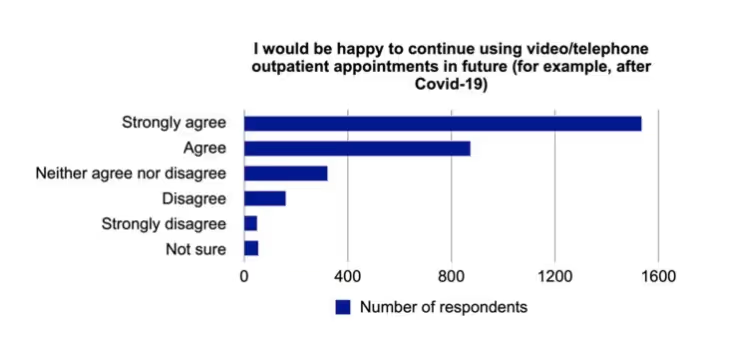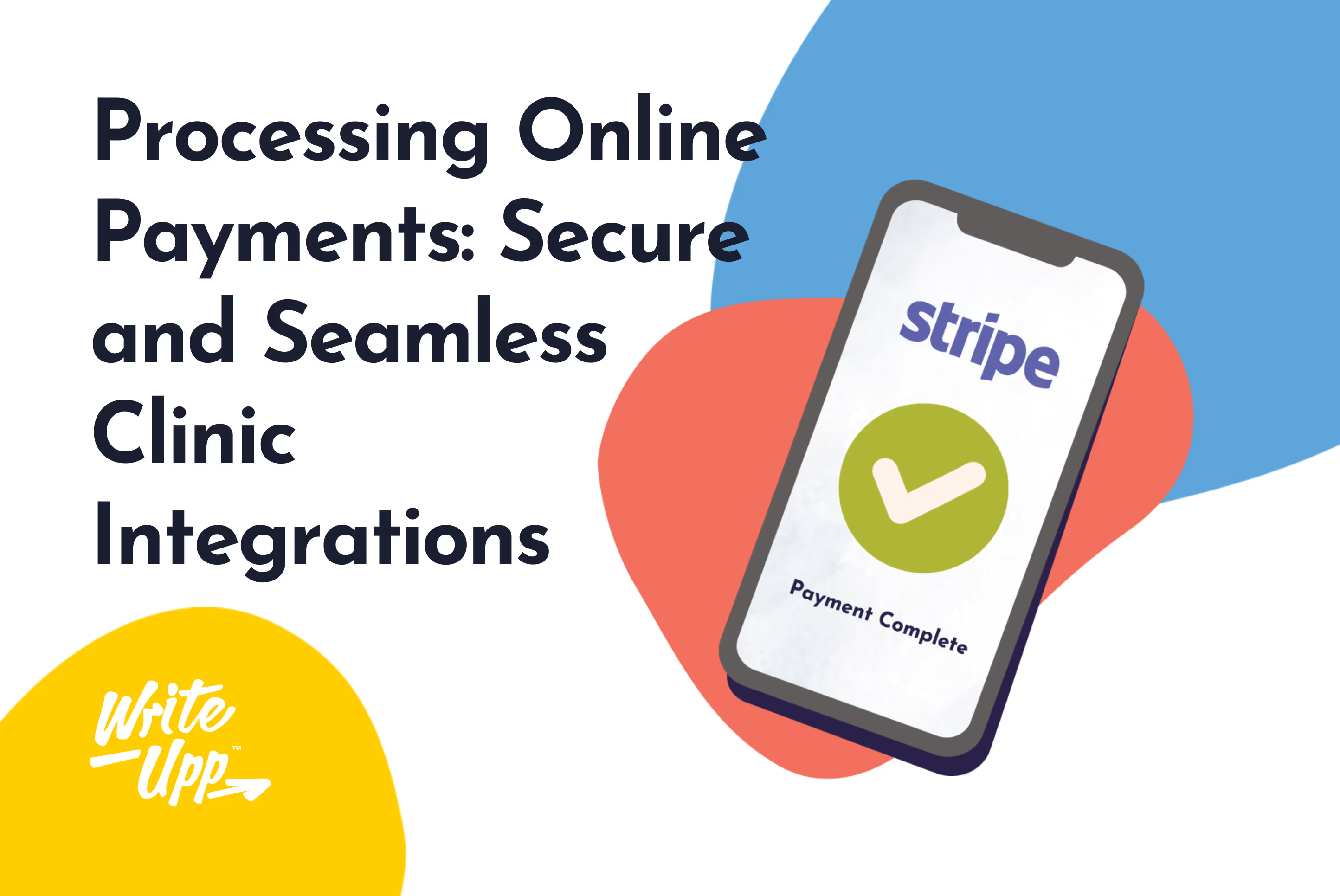We live in a time where the fusion of technology and healthcare is not just a futuristic concept but a present reality. The COVID-19 pandemic has accelerated this shift, making telehealth an indispensable tool rather than a mere option. As therapists, our commitment to providing quality care remains unwavering, yet the means to achieve this are rapidly changing.
Digital therapy can reshape the therapeutic relationship, the nuances of virtual communication, and the ethical considerations unique to this medium. Whether you're a seasoned telehealth practitioner or just beginning to explore this digital space, this post is a valuable resource for embracing telehealth solutions in a world where physical distance need not be a barrier to connection.
Key Takeaways:
- Telehealth is now a fundamental part of modern healthcare, accelerated by the COVID-19 pandemic.
- The telehealth market is experiencing significant growth and is projected to expand rapidly in the coming years, indicating its permanence in the healthcare landscape.
- Consumer preferences have shifted towards virtual visits due to convenience, accessibility, and a greater sense of privacy and comfort.
- Telehealth technology has been proven effective in various studies, offering benefits such as expanded access to care, flexibility, reduced no-shows, enhanced privacy, cost-effectiveness, and crisis management.
- When selecting telehealth software, consider features like high-quality video and audio, ease of use, security and compliance, online scheduling, multi-device compatibility, robust record-keeping, integration with Electronic Health Records (EHR), and reliable technical support.
- WriteUpp is recommended as a comprehensive and secure telehealth solution for therapists, offering fully integrated video consultations, a user-friendly interface, comprehensive features, robust security and compliance, customisation options, and exceptional support and resources.
- Integrating telehealth into your practice is a significant step towards the future of mental health services, and choosing the right software is crucial for a successful transition.
Emerging Trends in Telehealth
It's clear that telehealth is not just a fleeting trend but a fundamental component of modern healthcare. In this section, we explore the latest trends in telehealth, highlighting its growing significance in healthcare.
Statistics on Market Growth
Recent studies have shown a remarkable surge in the telehealth market. Since the onset of the COVID-19 pandemic, there has been a significant shift in how healthcare is delivered, with telehealth taking centre stage. This shift isn't just a response to the pandemic; it reflects a deeper, more systemic change in healthcare preferences and practices.
Data reveals that the telehealth market is growing and is projected to expand at an unprecedented rate in the coming years. According to a report by Mordor Intelligence, the telemedicine market is estimated to reach $172.44 billion in 2024 and is expected to grow to $330.26 billion by 2029, demonstrating a Compound Annual Growth Rate (CAGR) of 13.88% during the forecast period of 2024-2029. This growth is attributed to telehealth’s ongoing impact on the healthcare sector.
The increase in adoption by healthcare providers and the demand from consumers for remote healthcare services are key drivers of this growth. The numbers indicate that telehealth is not a temporary solution but a permanent fixture in the healthcare landscape.
Consumer Preferences for Virtual Visits
One of the most notable trends in telehealth is the change in consumer preferences. Patients, particularly those from tech-savvy generations, increasingly favour virtual visits over traditional in-person appointments. The reasons are manifold: convenience, accessibility, and, often, a greater sense of privacy and comfort. Since 2020, “online counselling” searches have increased by 124%, while the NHS found that patients are more willing to use remote video consultations as a regular part of their healthcare:

Source: NHS Providers
Virtual visits allow patients to receive care from the comfort of their own homes, eliminating the need for travel and reducing the time taken off work or other activities. This convenience is particularly beneficial for patients with chronic conditions, mobility issues, or those living in remote areas.
Patients are more comfortable with virtual consultations, recognising that they can receive the same level of care as they would in a physical office setting. This comfort with technology is a significant shift, indicating a more profound acceptance and integration of telehealth into everyday life.
Impact of Telehealth Technology
A study by the University of Zurich underscored the effectiveness of online therapy. In their research, they compared the outcomes of online therapy with traditional face-to-face therapy for patients suffering from moderate depression. The results showed that 53% of those treated online were no longer diagnosed with depression, compared to 50% for face-to-face therapy. Furthermore, follow-up sessions revealed higher recovery rates for online therapy patients.
Benefits of Telehealth Software for Therapists
Integrating telehealth software into private practice is not just a trend; it's a transformative shift in how health services are delivered. This change brings myriad benefits for therapists, reshaping the care landscape in several profound ways.
- Expanded access to care: Therapists can now reach clients with limited access to health services due to location, mobility issues, or lack of local resources. This expansion is particularly crucial in rural or underserved areas, where the scarcity of health professionals can be a significant hurdle.
- Flexibility and convenience: Sessions can be conducted anywhere, reducing travel time and allowing for more efficient scheduling. This flexibility is especially beneficial for clients with demanding work schedules, childcare responsibilities, or those who find it challenging to leave their homes due to anxiety or physical disabilities.
- Reduce no-shows: Video consultations for mental health services reduce missed appointments and improve the patient experience.
- Enhanced privacy and anonymity: Telehealth offers clients an additional layer of privacy. They can receive therapy without visiting a therapist's office, which can sometimes hinder seeking help.
- Cost-effectiveness: Telehealth reduces overhead costs for therapists who may not need as much physical office space and can decrease client travel expenses. Additionally, the time saved on commuting can be allocated to seeing more clients or engaging in professional development.
- Incorporation of technology-based therapeutic tools: Telehealth software often includes features like secure messaging, file sharing, and interactive tools that can enhance the therapeutic process. These features allow for ongoing communication and support, making tracking progress, sharing resources, and maintaining connections outside scheduled sessions easier.
- Improved crisis management: With telehealth, therapists have more tools at their disposal to manage crises. They can more easily provide immediate support through video calls or messaging, offering guidance and intervention in critical moments.
Adopting telehealth software in therapeutic practices offers many benefits that enhance the delivery of mental health services. It fosters a more inclusive, flexible, and efficient therapeutic environment, ultimately leading to better client outcomes. As we continue to navigate the digital age, embracing these technologies becomes advantageous and essential in our mission to provide accessible, high-quality mental health care.
Key Features to Look For in Telehealth Software
Selecting the right practice management software is critical for therapists and healthcare providers looking to offer remote services. Here are some key features to consider when choosing a video consultation platform.
High-Quality Video and Audio
The cornerstone of effective telehealth is clear, uninterrupted video and audio communication. The software should offer high-definition video calls and excellent audio quality to ensure consultations are as close to in-person interactions as possible. This clarity is vital for accurate assessments and effective patient engagement.
Ease of Use for Both Patients and Providers
User-friendliness is essential. The platform should be intuitive and straightforward for both patients and providers. This includes simple login processes, easy navigation, and minimal technical requirements. A user-friendly interface reduces the barriers to adoption, particularly for patients who may not be tech-savvy.
Secure and GDPR-Compliant
Security is non-negotiable. Your telehealth software must comply with GDPR or similar healthcare privacy laws, ensuring all patient information is securely stored and transmitted. Encryption, secure data storage, and compliance with privacy regulations are critical to protect patient confidentiality.
Online Scheduling and Automated Reminders
Online booking tools enhance the functionality of the software. The ability to book appointments within the platform streamlines the process. Automated appointment reminders via email or text can reduce no-shows and ensure a smoother operational flow.
Multi-Device Compatibility
The software should be compatible with various devices, including smartphones, tablets, laptops, and desktop computers. This flexibility ensures that patients can access care from the most convenient device, thereby increasing the accessibility and reach of your services.
Robust Record-Keeping and Note-Taking
An effective video consultation platform for healthcare should facilitate comprehensive record-keeping. This includes taking and storing notes during consultations, uploading patient documents, and maintaining a detailed history of patient interactions. Efficient documentation is crucial for continuity of care and legal compliance.
Integration with Electronic Health Records (EHR)
Seamless integration with existing Electronic Health Records (EHR) systems is crucial. Your telehealth software should be part of your practice management software. This integration ensures patient information is updated in real-time and accessible across different platforms, facilitating better coordinated and informed care.
Reliable Technical Support
Finally, reliable technical support is essential. Quick and efficient customer service for troubleshooting technical issues can greatly impact the user experience. The availability of support resources like tutorials, FAQs, and customer service online chat can enhance the software's overall functionality.
Implementing Telehealth in Your Practice: Discovering the Right Solution
As we conclude our exploration into the world of telehealth for modern therapists, one thing is abundantly clear: integrating telehealth into your practice is not just a mere addition but a significant leap towards the future of mental health services. However, the success of this integration heavily relies on choosing the right telehealth software that aligns with your practice's needs, values, and goals. This is where WriteUpp steps in.
Why Choose WriteUpp?
- Fully integrated video consultation feature: WriteUpp includes a seamless, built-in video consultation capability, allowing therapists to conduct secure and efficient online sessions directly through the platform. This integration ensures a smoother experience for both therapists and clients, eliminating the need for external video conferencing tools.
- User-friendly interface: WriteUpp offers a simple, intuitive interface that eases the transition for therapists new to telehealth. Its user-friendly design ensures you can focus on what you do best - helping clients without the added stress of navigating complex software.
- Comprehensive features: From secure video calls to client management, WriteUpp provides a comprehensive suite of features tailored to the unique needs of therapists. It integrates scheduling, billing, and client communication in one platform, streamlining your administrative tasks and enhancing the efficiency of your practice.
- Robust security and compliance: In the realm of telehealth, security and compliance with healthcare regulations are paramount. WriteUpp understands this and offers a platform that is not only secure but also compliant with GDPR, HIPAA, and other relevant standards, ensuring that your client's data is protected.
- Customisable to your practice's needs: Every therapy practice is unique, and WriteUpp embraces this by offering customisable features. Whether you need specific templates for client notes or tailored scheduling options, WriteUpp can adapt to your specific requirements.
- Exceptional support and resources: Transitioning to telehealth can be daunting, but WriteUpp softens this transition by providing outstanding customer support and a wealth of resources. From step-by-step guides to responsive customer service, you are never alone in your telehealth journey.
Making the Shift with Confidence
Incorporating telehealth into your practice is a decision that should be approached with careful consideration and the right tools. WriteUpp is a comprehensive, secure, and user-friendly solution that can help bridge the gap between traditional therapy methods and the digital future. It empowers therapists to extend their reach, streamline their operations, and, most importantly, provide uninterrupted, high-quality care to their clients, regardless of physical boundaries.
Let WriteUpp be your partner in this transformative journey as we embrace the digital age.



Join over 50,000 clinicians that we've helped using WriteUpp
Start my free trial






